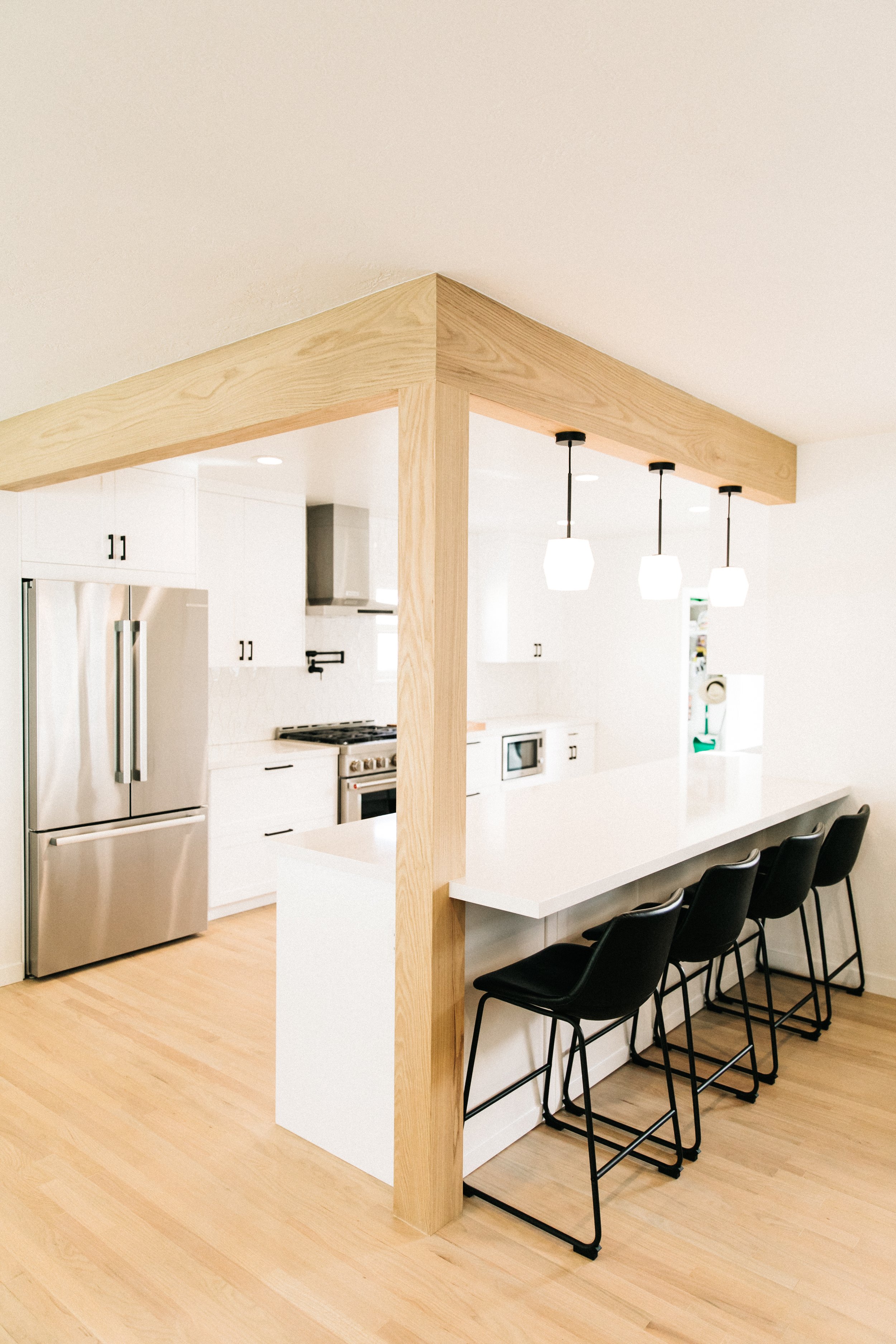Green Building
photo: Justin Almodovar
Green Building really just means smart building. It brings science and technology back into the building field, combined with environmental awareness and a concern for human health.
Smart Design
Green building starts with a good design. This means putting a lot of thought into how each space will be used and designing efficient spaces that are not filled with unnecessary square feet.
Smart design also means designing structures to be energy efficient. A key feature of an energy efficient home is passive solar design. By orienting the structure to face South, installing many south facing windows covered by overhangs or awnings, providing thermal mass on the interior, and heavily insulating and air sealing the building envelope, a building can be designed to basically heat and cool itself. This saves huge amounts of energy used for heating and cooling, and also makes the building more comfortable to live in. These measures are inexpensive to design and build, and they save a lot of money on energy bills in the long run.
LED lighting and Energy Star Appliances
LED lighting is a cost-effective and easy-to-implement green building strategy because LED’s use about 1/6th of the energy of older incandescent bulbs. There is very little upfront extra cost, and it pays off financially very quickly. Most LED lights are rated to last for 15-20 years and the light quality is excellent when carefully selected. Energy Star appliances save a lot of energy and usually don’t cost more than their counterparts, and every manufacturer has a wide selection to choose from. Heat pump water and air heaters are a no brainer these days since they are 3-5X more efficient than standard gas or electric water or forced air heaters.
Insulation
Insulation is another huge energy saver that easily pays for itself in dollars and in added comfort. Most homes we build get wrapped in 1″-2″ of EPS rigid insulation on all the exterior walls, which vastly improves the thermal performance of the wall assembly. By installing it on the outside of the framing, rigid insulation stops the thermal bridging that normally leaks heat out through all the framing members. In addition, we pay special attention to air sealing so that less heat leaks out in the winter.
Low water use
Low water use is becoming more and more important, especially with the droughts of the last few decades. It is pretty easy to make a home use less water without feeling like you are sacrificing. High-efficiency dishwashers use a quarter of the water that older models used. We install .8g/flush toilets that have surprising flushing power and use half the water that today’s “low flow” toilets use. It is easy to save water, it just takes a bit of extra effort to research and order the right products, and we can help with that.
Quality building products
Building green means using quality building products and methods. These are products that are environmentally friendly to produce and are not harmful to human health. Green materials and methods must be durable and hold up to the test of time.
One of the main building products is wood, but is it not all sourced equally. We frame mostly with FSC (Forest Stewardship Council) Certified wood. The FSC certification is the best in the world so we know that the wood we use is harvested in a sustainable way. This means the forest can keep producing forever, with minimal impact on its ecosystem. By using reclaimed materials, we are able to get new life from old materials, and save them from the landfill. By choosing local materials, we cut down on the embodied energy of the products, which is the amount of energy it takes to produce and transport those products. It does not cost much more to buy these products, and it makes a real impact.
Indoor air quality
Indoor air quality is another principle of green building. Since Americans spend more than 90 percent of their time indoors, it is important to choose building materials that will not harm the building occupants. Many products used in conventional building, such as vinyl, particleboard, adhesives, and paints, contain toxic chemicals that pollute the indoor air for the life of the building and lead to many terrible diseases and conditions. A few of the worst offenders, which continue to be used in almost every normal house, are vinyl chloride and urea-formaldehyde. These two chemicals are listed as known carcinogens by the EPA, which means they are known to cause cancer. They are often used in cheap building materials like vinyl flooring and particle board cabinets. But since they cause expensive and life-threatening illnesses, these products are far from being inexpensive over the long term. In most cases, we prefer solid plywood for cabinets instead of particle board, and hardwood flooring or tile instead of vinyl. All the major paint companies offer low and zero VOC paints. They cost about the same, perform about the same, and you can rest assured that you won’t be exposed to harmful chemicals as you sleep. If you build with us, we can help you avoid as many of these toxic chemicals as possible, which is not hard these days when alternative options are everywhere.
Because every client has a budget, green building is ultimately a juggling act of where money can be saved and where a bit more should be spent to maximize function, comfort, aesthetics, durability, sustainability, and payback on investment. As the industry continues to evolve, we do our best to stay up to date so that we can make these decisions with confidence. We are constantly reading, sharing information with others in our field, going to presentations and conferences, and learning from our own projects so that we can build the best product: beautiful, comfortable, and functional homes and workplaces that are healthy and enjoyable to live in, and will be around for your great, great-grandchildren to enjoy!




